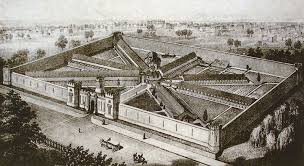Abstract
This in-class activity centers around how students understand the creation and construction of prisons within the United States. Suited for any level of sociology or criminology courses, this activity could be utilized in a criminology course or in a sociology lecture/discussion about structural functionalism, criminal justice systems or Foucault. In sum,...Download this resource to see full details. Download this resource to see full details.
Details
- Subject Area(s):
- Social Organization
- Resource Type(s):
- Class Activity
- Class Level(s):
- Any Level
- Class Size(s):
- Medium
Usage Notes
Time: 30-35 minsThis assignment was in response to students essentially asking, ‘if we know prisons are bad, why do they exist?’ Coincidentally, we were also talking about structural functionalism and it seemed like the perfect opportunity to talk about how prisons function as a cog in the machine, without giving up the purpose of the class...
Download this resource to see full details. Download this resource to see full details.
Learning Goals and Assessments
Learning Goal(s):
- Students should be able to clearly explain how structural functionalism can appear and operate and what that means for society.
- Assess and critically examine patterns in the creation and display of individual prisons/communities in their groups.
- (depending on when you use it):Discussion of panopticons and Foucauldian theories of self-policing.
Goal Assessment(s):
- Discussion of how structural functionalism manifests in everyday life.
- Post-activity writing opportunity to see how theory is actually actionable inside and outside the classroom.
- Discussion/pair/share/writing of post-activity understanding
When using resources from TRAILS, please include a clear and legible citation.


